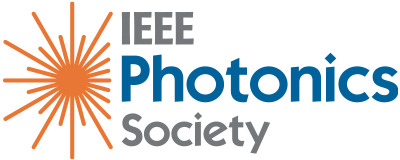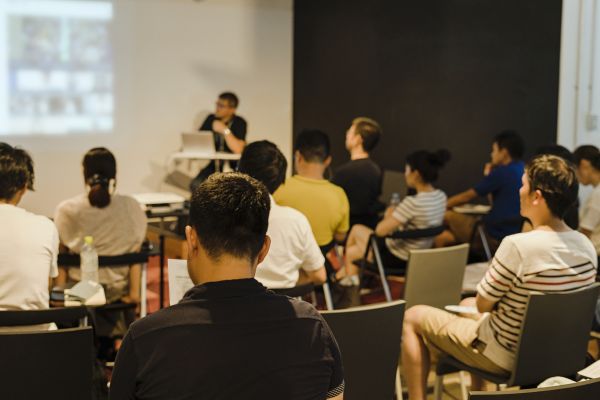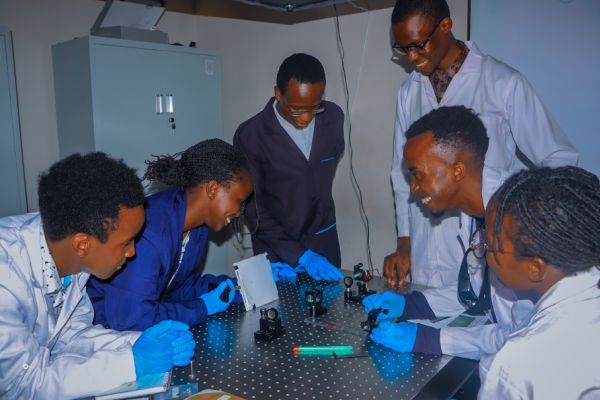The IEEE Photonics Society Distinguished Lecturer Program was designed to honor excellent speakers who have made technical, industrial, or entrepreneurial contributions to the field of photonics and to enhance the technical programs of the IEEE Photonics Society Chapters.
Chapters may request Distinguished Lecturers to present at chapter meetings, chapter-related events or technically co-sponsored conferences organized by a chapter. Lecturers are selected each term (January 1 – December 31) and now offer both a technical talk as well as a professional development talk. Lecturers are also available for virtual presentations.
We are pleased to announce the slate of Lecturers for the 2024:
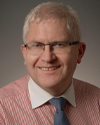
Juergen Czarske (Fellow EOS, OPTICA, SPIE, IET, IoP) is a full chair professor, senator, and director at TU Dresden, Germany. Juergen is an international prize-winning inventor of laser-based technologies. His awards include the 2008 Berthold Leibinger Innovation Prize of Trumpf Laser Systems, 2019 OPTICA Joseph-Fraunhofer-Award/Robert-M.-Burley-Prize, 2020 Laser Instrumentation Award of IEEE Photonics Society, and 2022 SPIE Chandra S Vikram Award. He is Vice President of the International Commission for Optics, ICO, and was the general chair of the world congress ICO-25-OWLS-16-Dresden-Germany-2022 with attendees from 55 countries and plenary talks by 3 Nobel laureates. In total, over 1000 publications and talks, including over 150 invited talks, over 30 patents, and over 500 reviewed papers with over 250 papers in renowned journals.
Technical Talk: Computational Fiber Imaging Using Digital Holography and Deep Learning for Biomedicine and Communication
Abstract: Light has the potential to recognize the development of diseases, to prevent them or to heal them early and gently. Traditionally, however, lens-based imaging results in bulky systems. We outline the 3D imaging with needle-sized, lensless multicore fiber endoscopes using holography. Deep learning is promising for label-free cancer diagnostics in neurosurgery using minimally invasive endoscopy. Besides biomedicine, data transmission with fiber networks will be highlighted. Multimode fibers show promise for improving data rates in optical communications but come with the challenge of compensating for scattering effects. Physics-informed deep learning enables to correct the scattering, resulting in advancing
security and data rate. Fiber imaging promises advances in various fields such as information, biomedicine and environmental protection.
Career-Focused Talk/Professional Development Talk: From Clods as a Farmer to Professorship for Laser Measurement Engineering
Abstract: Prof. Czarske grew up on a small farm and the path seemed set, but successes at school and hobbies in physics, chemistry and electronics changed perspectives. After graduating from high school, he was the first in the entire family to study. Supported by the Siemens scholarship, he was able to study not only electrical engineering but also physics. After completing his doctorate, he worked in an industry-oriented research institute and furthermore conducted research in the USA and Japan. In 2004 he founded a chair and institute (Czarske Lab) in Dresden dedicated to laser systems technology, deep holography for advances in biomedicine, fiber communication and green energy.
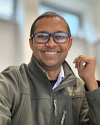
Tawfique Hasan is a Professor of NanoEngineering at Cambridge University Engineering Department. Tawfique trained in Electrical and Electronic Engineering in Bangladesh before completing a Masters in Analog VLSI design in Australia. His PhD was on solution processing of carbon nanotubes for ultrafast optical applications, sparking his interest in nanomaterials and light. Together with his graduate students and colleagues, Tawfique initiated the field of 2D crystal printable inks, pioneered ultrafast lasers using 2D crystals, and led the development of the world’s smallest optical spectrometer in 2019. His group’s current interest is in nanomaterials for (opto)electronics, photonics and a range of sensing applications augmented with computational approaches. Tawfique has published >140 peer-reviewed journal articles with >29,000 citations and 66 H index. He is a fellow of Optica.
Technical Talk Title: Miniaturization of Optical Spectrometers
Abstract: Optical spectroscopy is widely used in non-contact materials analysis. Although laboratory bench-top spectrometers offer excellent resolution, range and sensitivity, their miniaturization is crucial for portable applications demanding indicative but instantaneous results. Among the recent developments in scaled-down spectrometers, an increasingly popular strategy is to use ‘reconstructive’ or ‘computational’ algorithm-based devices. Typically featuring spectral encoders with known optical responses, the measured electrical signals in such devices are combined to ‘approximate’ the incident spectrum through these algorithms. I will present an evolution of spectrometer miniaturization over the past 30 years and give examples of such disruptive concepts shaping future device technologies.
Career-Focused Talk/Professional Development Talk: The Joys and Tribulations of Crossing Disciplines in the Academia
Abstract: Crossing disciplines in science can be a thrilling yet challenging endeavor. It opens up a
world of possibilities, fostering innovation and unique perspectives. The joy lies in the unexplored connections and synergies that eventually emerge, stimulating creativity and intellectual growth. However, tribulations accompany this pursuit. Navigating unfamiliar territories requires overcoming countless barriers and bridging knowledge gaps. It demands patience, open-mindedness, and perseverance. Nevertheless, the rewards of crossing disciplinary boundaries make it an adventure worth undertaking. I will talk about my adventures in academia and the lessons I learned in my journey across the disciplines.
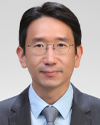
Jungwon Kim received the B.S. degree in electrical engineering from Seoul National University in 1999, and the S.M. and Ph.D. degrees in electrical engineering and computer science from MIT in 2004 and 2007, respectively. From 1999 to 2002, he was a Development Engineer with FiberPro, Inc., Daejeon, South Korea. From 2007 to 2009, he was a Postdoctoral Associate with MIT Research Laboratory of Electronics. In 2009, he joined the faculty of the Korea Advanced Institute of Science and Technology (KAIST), where he is currently a professor of mechanical engineering and adjunct professor of electrical engineering. In 2013 he was a visiting scientist at the Max-Planck Institute for Quantum Optics (MPQ). His research interests are ultrastable and ultralow-noise optical frequency combs and their applications in microwave/mm-wave photonics, ultrafast 3D imaging, photonic signal processing, radio astronomy, quantum sensors, and industrial metrology. Dr. Kim is a Fellow of Optica a Senior Member of IEEE, and a Topical Editor of Optics Letters.
Technical Talk Title: It’s the Perfect “Timing” for Optical Frequency Combs
Abstract: Optical frequency combs, with their unique features in both the time and frequency domains, have transformed precision science and engineering over the last two decades. In this lecture, I will present on the latest progress in the ultralow-noise frequency combs and their applications with an emphasis on precision timing, synchronization, and microwave/mm-wave photonics. Both mode-locked laser combs and chip-scale micro-combs can reach quantum-limited timing jitter performances, which allows for various timing applications with unprecedented precision. I will present innovative comb timing applications including attosecond optical timing, on-chip clock distribution networks, ultralow-noise microwave/mm-wave signal generation, photonic analog-to-digital conversion, ranging imaging and vibration sensing, and timing and synchronization for ultrafast X-ray/electron science and radio astronomy.
Professional development talk title: What Did I Do When the “Timing” Wasn’t Always Ideal for My Career and Research?
Abstract: In the last decade, the application areas of frequency combs have greatly expanded. I’m currently working on several projects that make use of the unique properties of frequency combs. It’s really exciting for me to be able to collaborate and solve problems with experts from various fields, so it’s perfect timing as a researcher. However, I must admit that things do not always go as planned, and there are times when the timing is not ideal for my research plans. I’d like to talk about both good and bad timings in my career and how I dealt with them.
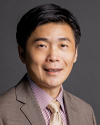
Prof. Cheng-Wei Qiu is Dean’s Chair Professor in the Department of Electrical and Computer Engineering, National University of Singapore. He is a Fellow of APS, Optica, SPIE and The Electromagnetics Academy, US. He was the recipient of the President’s Science Award 2023, the highest science accolade in Singapore. He was elected Fellow of ASEAN Academy of Engineering and Technology. He is well known for his research in structured light and interfaces. He also received MIT TR35@Singapore Award, the Young Scientist Award from the Singapore National Academy of Science, the World Scientific Medal 2021 by the Institute of Physics, Singapore, Achievement in Asia Award by the International Organization of Chinese Physicists and Astronomers in 2022. He was a Highly Cited researcher in 2019-2023. He has been serving as Associate Editor for various journals such as JOSA B, PhotoniX, Photonics Research, and Editor-in-Chief for eLight. He also serves on the Editorial Advisory Board for Laser and Photonics Review, Advanced Optical Materials, and ACS Photonics.
Technical Talk Title: Chiral Meta-photonics with Bound States in the Continuum
Abstract: In this talk, I will report recent progress on how chirality could transcend designs of advanced metasurfaces, sensing, BIC photonics and optical micromanipulations. In particular, we will report very recent results on realizing intrinsic chiral metasurfaces where the engineered slant geometry breaks both in-plane and out-of-plane symmetries. Our result achieves intrinsic chiral bound states in the continuum with near-unity CD of 0.93 and quality factor exceeding 2300 for visible frequencies. We will also cast new perspectives on using photonic orbit angular momentum to effectively discriminate single-size and multi-scale chiral nanostructures.
Professional Development Talk Title: When Low-dimensional Materials Meet Meta-photonics
Abstract: Metasurfaces photonics (meta-photonics) and low-dimensional materials have been two important candidates in photonics. In this talk, I will report the most recent developments in plasmonic/dielectric metasurfaces, and focus on how monolayer TMDC and layered 2D materials could be hybridized with metasurfaces to realize novel light behavior, such as zero-dark-current and bipolar semimetal photodetector, monolayer meta-lens, enhanced SHG/PL, and tunable structural colors, by coordinating those two parties. Finally, we will elaborate our new breakthrough on van der Waals polaritonic metasurfaces, as a new roadmap toward ultra-low loss, long-range propagation, topological interfaces, and tailorable on-chip integrated functional devices. This talk illustrates how new photonics directions are identified and explored, serving as a case study for the students and young researchers to find their own niches and career path in the general area of photonics.
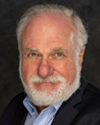
Daniel Renner grew up in the southern part of Chile, in South America. He received his Bachelor of Engineering Degree from the Universidad de Chile and then, in his early twenties, he went to the University of Cambridge in England to do a Ph.D. in opto-electronics, a new field of studies at the time. Now, decades later, he has lived through the whole range of experiences that relate to the research, development, manufacturing and commercialization of complex photonic devices and systems, used in communication, sensor and industrial applications. In the past 30 years, Daniel has been directly involved with the growth of four photonic start-ups in the United States, Ortel Corporation, Agility Communications, Aerius Photonics and Freedom Photonics. This gives him a unique perspective on the workings of a high-tech small business. Daniel is currently the Chair of the IEEE Photonics Society Industry Engagement Committee, from where he is trying to help other photonic small businesses.
Technical Talk Title: Monolithic, Heterogeneous and Hybrid Photonic Integration – There is a role for all
Abstract: Photonic integration has been at the center of photonic activity for several years. Over this period, great strides have been made to increase the integration density and integrated chip functionality. This talk will work its way up from the drivers for photonic integration – why do we need Photonic Integrated Circuits (PICs)? What are their similarities and differences with Electronic Integrated Circuits (EICs)? This analysis of integration drivers will lead to a discussion of recent progress on the main paths: monolithic, heterogeneous and hybrid. The talk will conclude with possible approaches to meet the additional demanding considerations for future Quantum PICs.
Professional Development Talk Title: Life at a Photonic Startup – A Very Personal Account.
Abstract: Photonic startup business success relies heavily on the uniqueness and quality of its technical know-how. Success also depends heavily on a range of skills and activities beyond technical prowess. Business aspects such as marketing, sales, team leadership, commercial opportunity development, proposal preparation, program management, quality control, budgeting, funding and financial planning among others, are crucially important. This presentation will focus on dissecting all the skills and activities required for photonic startup business success. The presenter will attempt to do this through examples drawn from his own experience as a technical and business practitioner in large and small photonic companies.
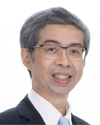
Dr. Sumriddetchkajorn received his B.Eng in Electrical Engineering (Honors) in 1994 from Khon Kaen University, Thailand. In 1996, he was awarded a Thai government scholarship and then earned his M.S. (1998) and Ph.D. (2000) in Optical Science and Engineering from the University of Central Florida, USA. From 1994-1996, he was with Electro-Optics Lab at the National Electronics and Computer Technology Center (NECTEC) under the National Science and Technology Development Agency (NSTDA), Thailand, responsible for embossed hologram processing and computer-generated holograms. Since 2001, he had rejoined NECTEC where he focused on solving technical issues related to agriculture, public health, security, and industry with optics and photonics. He also played leadership roles as Lab Director, Research Unit Director, Deputy Executive Director of NECTEC, Executive Director of NECTEC, and Acting Executive Vice President of NSTDA.
He had also been a Board Member of Thailand’s Digital Economy Promotion Agency. In addition, he was a Member of the Advisory Committee for Thailand’s National Security Council on Science, Technology, and Digital and Chair of ASEAN Committee on Science and Technology’s Subcommittee on Information and Technology. He received the 2003 Young Technologist Award and the 2004 Young Scientist Award from the Foundation for the Promotion of Science and Technology under the Patronage of H. M. the King of Thailand. In addition, he was awarded the 2005 ICO/ICTP Award (a.k.a. ICO Gallieno Denardo Award) from the International Commission for Optics (ICO) and the ICTP. In 2002, he initiated the formation of the SPIE, Optica, and IPS Thailand Chapters. He is currently a Senior Member of IEEE. He is also a Fellow of SPIE and Optica and a visiting lecturer of both societies.
Technical Talk Title: Unleashing the Power of Agri-Photonics
Abstract: Agri-photonics has shown benefits of light exploitation in agriculture. The integration of photonics and digital technologies has also assisted in paving the way for Agriculture 4.0 and beyond. This lecture encompasses the photonics-sensing in precision agriculture, aiming to navigate from pain points to prototypes. We show examples by delving into specific pain points in rice cultivation, fruit quality analysis, sericulture, and shrimp farming sectors. We also present cost-effective and scalable photonic-based prototypes as highly efficient remedies. Additionally, we introduce the concept of combining optical plasmonic sensing with quantum technology, opening doors to future advancements of photonics sensing systems for agriculture.
Professional Development Talk Title: Becoming an Effective Researcher with Leadership Skills
Abstract: Based on my research and management experience in a national research center, I share my experience in insights and practical tips on how to cultivate leadership skills while conducting research. By embracing these qualities, graduate students and researchers can inspire themselves and their peers, foster a culture of innovation, and make meaningful research works that benefit society.
